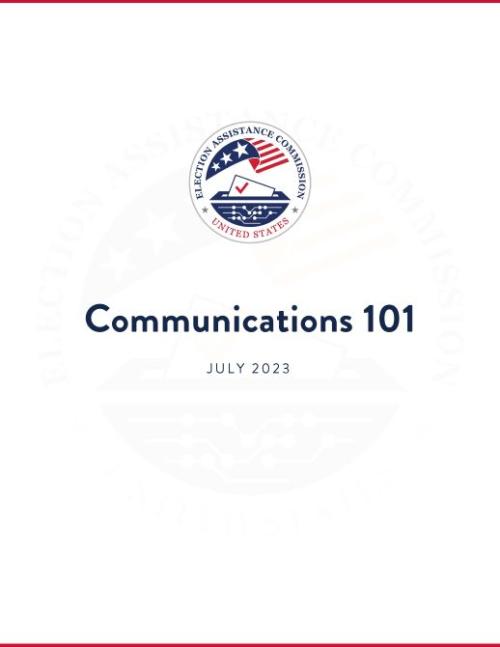To assist election officials in developing materials that affect their operations, education, and outreach, the U.S. Election Assistance Commission (EAC) aims to provide resources that support effective communication. Many of the resources are customizable to meet the needs of election offices and their audience. Strategic communication efforts foster transparency and allow election officials to quickly disseminate accurate information, address concerns, and provide guidance to voters and the public.
Communications 101 Toolkit
Election officials often have a wide range of responsibilities in addition to managing elections, such as communications or public relations manager. Although its application will differ among offices, the EAC created this booklet to help election offices successfully communicate with the public, and plan for challenges that may arise throughout their work. This guide has something to help with your office's communications needs, including:
- Tactics
- Planning
- Crisis Management
- Engaging with Journalists and the Media
- Consistent Branding and Messaging
- Running Events
- and more
Read and download the Communications 101 guide.
The EAC has developed additional resources to complement this guide.
Additional Communications Resources
Election Official Social Media Toolkit - This toolkit includes over 150 customizable images accompanied by alt. text, sample posts, quick tips, and more!
Communications 101 Training Series for Election Officials
“Communications 101 for Election Officials” is a free, on-demand video training series covering tools and strategies election officials can use to communicate with voters and other stakeholders. Election officials throughout the nation continue to be the primary authority on election administration and the voting process. The EAC’s training series promotes ways election officials can communicate critical voting and election information to a variety of audiences, serving as a trusted source of information regardless of the jurisdiction’s size or available resources.


